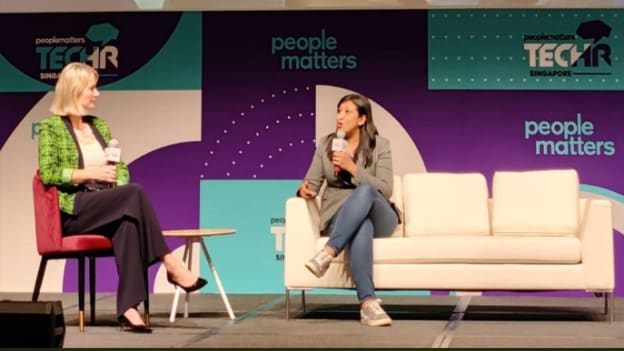Profit and Purpose: CEOs reflect on the emerging opportunities for businesses

With rising inflation and an uncertain business climate on top of the business priorities, companies need to rethink their people agenda to respond to the macro-economic environment.
At the People Matters, TechHR 2022 Singapore edition, leading CEOs voiced their thoughts on their innovation agenda, emerging technologies and how they’re navigating the war for talent. Peta Latimer, Chief Executive Officer at Mercer Singapore and Maya Hari, CEO at Terrascope, reflected on the growth roadmap for their companies and how leadership could play a critical role in driving impact.
Profit and purpose
Reflecting on her own career trajectory of working with leading technology companies like Microsoft, Google and Cisco, Maya said she chose to move into a start-up in the climate technology sector because of its purpose-led outlook. “What was amazing about Terrascope was that the platform measures carbon footprint and helps decarbonisation of large enterprises using technology at its core,” she noted.
With ESG becoming central to business operations, Maya pointed out that there are a number of new opportunities that are opening up for businesses today. And as businesses reap profits, they have a chance to drive meaningful impact.
The alignment of profit and purpose is not just needed at the macro level. Employees are increasingly looking to work for businesses with a ‘purpose-driven’ business outlook.
Speaking of the shifting trends in hiring talent, Maya noted that today’s employees are not just forthright about what they want; they also want to work for companies that are making a meaningful impact. HR and business leaders must consider “what’s on offer and what’s not” in today’s workplace.
“Understanding the ‘how’ in aligning profit and purpose is crucial for many businesses,” Peta said. It’s an art and science, Maya noted. The pandemic has increasingly made self-expression and flexibility central to work. And employees today expect businesses to be fair, equal, and authentic. “In some ways, it’s a very democratised world.”
The role of technology
Businesses have already embarked on digital transformation, which was accelerated by the pandemic. So, what is the new trajectory of focus?
“The biggest change I see is that we talk about the agility needed for the business from the cloud infrastructure. People systems need to be very agile. There’s very low tolerance for inefficient systems,” Maya noted.
There’s a need for care while designing employee experience and engagement tools. Today, with the rise of social media, everyone has an opinion. Therefore, companies must think closely about the latest changes in the Saas world.
“Finding tools that are easy to use, making sure employees aren’t going through hoops while using technology, and using data and intelligence to empower and facilitate mentoring becomes incredibly important,” Maya noted.
“Business process reengineering is the best and worst thing about implementing technology,” Peta said.
Rather than think about constraints first, think about starting from scratch and assume an entrepreneurial approach when going through your technology journey, Maya said. Finding the art of balancing efficiency, affinity, and engagement will be crucial as shorter-tenured employees become the norm for business.
















